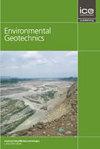盐度含水层CO2溶解度捕获的密度驱动对流:模拟和影响因素
IF 2.2
4区 工程技术
Q3 ENGINEERING, GEOLOGICAL
引用次数: 0
摘要
工业发展大大增加了大气中二氧化碳的浓度,产生了危害全球气候和人类健康的温室效应。在含盐含水层中封存二氧化碳被认为是消除大气中二氧化碳水平的有效方法之一。作为一种重要的机制,溶解度捕获在很大程度上决定了含盐含水层中CO2的固存效率,而这又取决于固存过程中发生的密度驱动对流。密度驱动对流受多种因素的影响。然而,现有的关于这些影响因素的讨论仍然模棱两可,甚至得出相互矛盾的结论。本文综述了常用的模拟方法以及密度驱动对流的影响因素。我们认为,深度、渗透率、pH值和SO2杂质浓度较高的咸水层是理想的CO2固存场所。一定程度的孔隙度、裂缝、分层、坡度、水动力弥散、背景流动和地层压力也被认为是有利条件。同时,二叠系白缘砂岩或碳酸盐岩的地质构造是重要的,但不应含有粘度和盐度过高的卤水。最后,对需要进一步研究的内容进行了讨论。本文章由计算机程序翻译,如有差异,请以英文原文为准。
Density-Driven Convection for CO2 Solubility Trapping in Saline Aquifers: Modeling and Influencing Factors
Industrial development has significantly increased the concentration of CO2 in the atmosphere, resulting in the greenhouse effect that harms the global climate and human health. CO2 sequestration in saline aquifers is considered to be one of the efficient ways to eliminate atmospheric CO2 levels. As an important mechanism, the solubility trapping greatly determines the efficiency of CO2 sequestration in saline aquifers, and this depends, in turn, on the density-driven convection that occurs during the sequestration. Density-driven convection is influenced by multiple factors. However, existing discussions on some of these influential factors are still ambiguous or even reach contradictory conclusions. This review summarizes the common modeling approaches and the influence of factors on density-driven convection. We suggest that saline aquifers with high values of depth, permeability, pH, and SO2 impurity concentration are the ideal CO2 sequestration sites. A certain degree of porosity, fractures, stratification, slope, hydrodynamic dispersion, background flow, and formation pressure are also considered advantageous. Meanwhile, the geological formation of the Permian White Rim Sandstone or carbonate is important, but it should not contain brine with excessive viscosity and salinity. Finally, we discuss the contents in need of further research.
求助全文
通过发布文献求助,成功后即可免费获取论文全文。
去求助
来源期刊

Environmental geotechnics
Environmental Science-Water Science and Technology
CiteScore
6.20
自引率
18.20%
发文量
53
期刊介绍:
In 21st century living, engineers and researchers need to deal with growing problems related to climate change, oil and water storage, handling, storage and disposal of toxic and hazardous wastes, remediation of contaminated sites, sustainable development and energy derived from the ground.
Environmental Geotechnics aims to disseminate knowledge and provides a fresh perspective regarding the basic concepts, theory, techniques and field applicability of innovative testing and analysis methodologies and engineering practices in geoenvironmental engineering.
The journal''s Editor in Chief is a Member of the Committee on Publication Ethics.
All relevant papers are carefully considered, vetted by a distinguished team of international experts and rapidly published. Full research papers, short communications and comprehensive review articles are published under the following broad subject categories:
geochemistry and geohydrology,
soil and rock physics, biological processes in soil, soil-atmosphere interaction,
electrical, electromagnetic and thermal characteristics of porous media,
waste management, utilization of wastes, multiphase science, landslide wasting,
soil and water conservation,
sensor development and applications,
the impact of climatic changes on geoenvironmental, geothermal/ground-source energy, carbon sequestration, oil and gas extraction techniques,
uncertainty, reliability and risk, monitoring and forensic geotechnics.
 求助内容:
求助内容: 应助结果提醒方式:
应助结果提醒方式:


